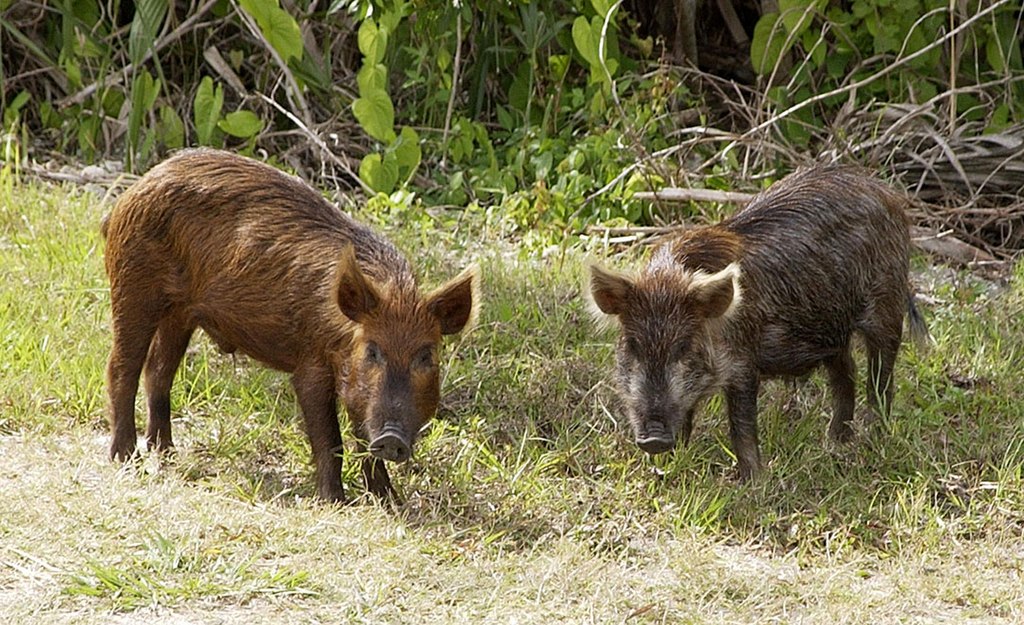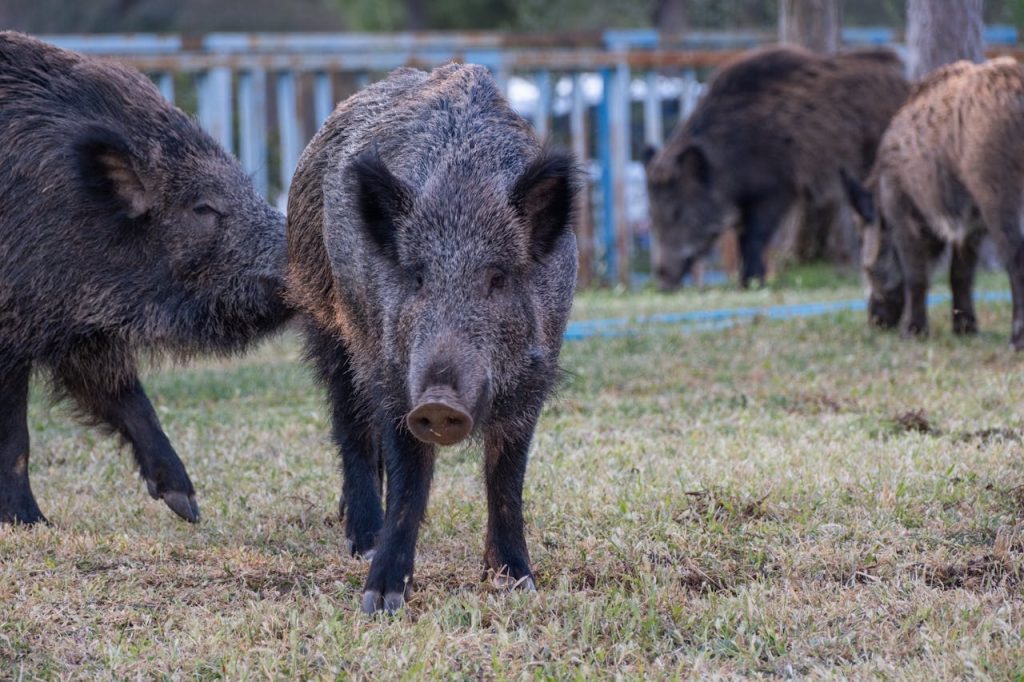Your cart is currently empty!
California’s Wild Pigs Are Turning Electric Blue And The Reason Is More Troubling Than You Think

Wild pigs are hardy survivors, but lately in California, hunters and wildlife officials have stumbled upon something out of a sci-fi film: pigs with fat that glows an electric, slushie-like blue. While the strange color might seem like a quirky oddity, it is actually a window into a larger environmental crisis quietly unfolding across the state.
The Shocking Discovery of Blue-Fat Pigs
In February 2025, while assisting a rancher along the Salinas River, Monterey County trapper Dan Burton encountered what looked like a hunting legend come to life. After bringing down a wild pig, he opened the carcass and saw fat marbled with an unnatural, icy blue. Burton, a fourth‑generation local who grew up hearing whispers of such creatures, was stunned to see proof with his own eyes.

What made the moment striking was not only the color itself, but the circumstances. The pigs had been frequenting farmland at night, pushing against fences and digging near bait stations intended for rodents. Their sheer size and persistence made them formidable intruders, and ranchers had turned to Burton for help. When the vivid hue appeared inside the pig, it transformed a nuisance control job into a matter of public health concern.
The finding wasn’t entirely without precedent. A decade earlier, another cobalt‑colored pig had made headlines in California, and even flocks of geese with blue innards were reported in the Bay Area in 2021. Still, such cases are rare enough to spark disbelief until someone witnesses them firsthand. For Burton, the eerie discovery served as confirmation that the problem of toxic contamination had reached a very visible tipping point.
How Poison Sneaks Into the Food Chain
What makes the blue fat so startling is how easily the dye and the poison behind it reach larger animals. Bait stations stocked with diphacinone-laced oats are designed for small ground squirrels, but pigs are strong enough to topple or smash the containers and gorge themselves. In doing so, they consume doses far beyond what the bait was ever intended to deliver, leaving unmistakable traces in their tissue.
The visibility of the dye is only part of the story. Because the bait is formulated to be highly palatable, pigs are encouraged to overeat it, increasing the likelihood of contamination. Unlike other toxins that might break down or lose potency, anticoagulants persist inside an animal’s body for days or weeks, giving the chemical ample time to circulate. That persistence means that even when no blue coloration is visible, residues remain hidden in organs and fat deposits.
The problem doesn’t stop with pigs. Once ingested, anticoagulants work by thinning blood and preventing clotting, a slow process that makes poisoned animals vulnerable to predation. Rodents weakened by the poison become easy meals, passing sublethal doses up the food chain to predators and scavengers. This indirect transfer ensures that the chemical doesn’t stay contained to its original target but instead moves outward through entire ecosystems.
A Bigger Problem Than Blue Fat
The discovery of blue fat may be the most visually dramatic example, but it represents just one symptom of a broader contamination crisis. Over the past decade, toxicology surveys have revealed that anticoagulant residues are not confined to isolated incidents. Bears, mountain lions, and raptors routinely test positive, showing that the chemicals are present across multiple habitats and trophic levels. The recurrence across species demonstrates that exposure is chronic and widespread, not a series of rare accidents.
What makes this pattern troubling is its ecological reach. Large predators like mountain lions accumulate higher concentrations because they feed on smaller animals that have already ingested poison, creating a magnifying effect as toxins move up the food chain. Birds of prey and scavengers, which rely on carcasses or weakened animals, are similarly vulnerable. These pathways ensure that chemicals designed for rodents have become embedded in California’s larger wildlife web, touching species that play essential roles in ecosystem balance.
California’s Regulatory Tightrope
California’s rules on rodenticides reflect years of mounting concern. In 2020, lawmakers approved Assembly Bill 1788, which banned most consumer uses of second-generation anticoagulants after repeated findings of contamination in wildlife. That law was followed in 2024 by a broader moratorium on anticoagulants statewide, the most aggressive restrictions of any U.S. state. Despite these advances, the law carved out exceptions for agriculture, public health emergencies, and water supply protection, creating loopholes that continue to put non-target species at risk.

Implementation also presents challenges. Enforcement depends heavily on landowners and pest-control operators following strict guidelines, yet monitoring in remote or agricultural areas is limited. Legal bait stations, like those breached by pigs in Monterey County, illustrate how even regulated applications can have unintended consequences when confronted by determined wildlife. Regulators are left walking a tightrope between meeting farmers’ needs for cost-effective pest control and preventing widespread ecological damage.
At the federal level, the Environmental Protection Agency has tightened purchasing rules, requiring certification for stronger anticoagulants. However, national restrictions remain uneven, and states like California often push ahead of federal policy. The result is a patchwork system where progress is notable but far from foolproof, and where incidents like the appearance of blue pigs expose the remaining cracks in regulatory armor.

Scientists warn that such contamination can weaken populations over time, even if it doesn’t always kill outright. Sublethal exposure can impair reproduction, compromise immune systems, and increase mortality from disease or injury. When apex predators and keystone species are affected, the impacts ripple outward, altering predator-prey relationships and diminishing biodiversity. In this way, the phenomenon of blue pigs is less an isolated oddity than a highly visible marker of an invisible, long-term ecological threat.
Searching for Alternatives
Experts warn that replacing anticoagulants with other toxins would likely substitute one ecological problem for another. For that reason, conservationists and researchers are calling for a broader toolkit of non-lethal strategies. One approach is sanitation: by reducing food waste and sealing grain storage, farms and urban areas alike can limit rodent populations without resorting to poison. Fertility control is another avenue gaining traction. Products like ContraPest induce sterility in rodents, lowering populations gradually without leaving chemical residues in the environment. Trials in New York and Chicago have shown measurable success, suggesting scalability to agricultural contexts.

Integrated pest management (IPM) combines these tools with natural predation and habitat modification. Encouraging raptors and owls through nest boxes, for example, provides biological pressure on rodent numbers. Farmers in parts of California and abroad have adopted such measures, reporting fewer rodents and less reliance on chemical controls. Looking internationally, countries like the United Kingdom have invested in IPM frameworks that emphasize ecosystem balance rather than eradication. The lesson from these models is that effective pest control can be achieved by layering preventive measures, fertility reduction, and natural predators, avoiding the cascading harms of widespread poison use.
What It Means for Hunters and Communities
For hunters, the discovery raises urgent food safety questions. Unlike other contaminants that may diminish with cooking, diphacinone remains chemically stable even at high temperatures. That means wild pork harvested from contaminated areas can carry hidden risks no matter how it is prepared. Because there is no established safe threshold for human consumption, eating such meat becomes a gamble that hunters cannot reliably assess in the field without laboratory testing. Public health officials have cautioned hunters to remain alert for unusual coloration and to consider the potential for unseen contamination before serving wild pork to their families.

For rural communities, the issue touches on cultural and economic traditions. Wild pig hunting is not only a form of population control but also a valued source of local meat and community events. The possibility that these animals carry residues of agricultural poisons undermines trust in a food source many consider natural and sustainable. Beyond food safety, there is also an ecological lesson. When poisons spread into unintended species, they weaken the very ecosystems that communities depend on for agriculture, recreation, and cultural identity. The appearance of blue pigs therefore, acts as both a dietary caution for hunters and a wider signal that chemical shortcuts come with hidden costs that ripple outward into community life.
The Blue Pig as a Warning Sign
California once banned lead ammunition to protect condors, recognizing how toxic substances ripple invisibly through the food web. Now, with pigs literally glowing from ingested poison, the state faces a parallel challenge. Do we continue relying on chemical shortcuts, or learn from these warning signs and shift toward sustainable alternatives?

The blue pigs of Monterey aren’t just an oddity. They’re a neon-colored alarm bell, urging us to rethink how we coexist with both pests and wildlife before the damage spreads beyond repair.
Featured Image from NASA or National Aeronautics and Space Administration, Public domain, via Wikimedia Commons
